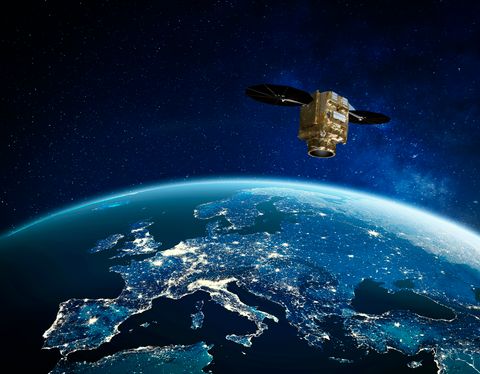The Earth Return Orbiter - bringing back the first-ever rock samples from Mars

A piece of Mars on Earth
Airbus engineer Sophie Narbonne (Attitude And Orbit Control System (AOCS) Architect for MSR-ERO mission) and her colleagues are developing the first interplanetary cargo courier. Earth Return Orbiter will bring the first-ever Mars samples to Earth in the early 2030s, allowing scientists to determine whether other life exists in our universe.
Sophie, Mars is 350 million km away. Why is it a good idea to bring rock samples to Earth?
It is not only a good, but a great idea. Because having the first-ever Mars samples here on Earth will allow scientists to perform much deeper analysis than any instrument on a Mars rover could ever deliver. Plus, they don’t have to wait until the next rover mission to get answers to additional questions raised by on-Mars analyses. Scientists can study all they need in one go, whenever they want.
How will all this benefit humanity?
Analysing Martian soil and rocks could help us answer one of the most fundamental questions of humanity: does other life exist in our universe? Mars is an excellent place to investigate this because it is the most similar planet to Earth in the Solar System. Evidence suggests that Mars was once full of water, warmer and had a denser atmosphere, offering a potentially habitable environment for further human space exploration. Understanding the history of Mars and its geophysical processes also promises to uncover details of the evolution and history of Earth and other planets. All this will help us to better understand where we are coming from and where we are headed to.
How are the rocks brought back to Earth?
With the first interplanetary cargo courier, the Earth Return Orbiter (ERO), that, in Mars orbit, will capture the first-ever Mars samples NASA’s Perseverance rover is currently collecting on the Red Planet and fly them back to Earth (see infographics below explaining how it works). This is a phenomenal technical feat as part of the world famous NASA Mars Sample Return (MSR) mission. And Airbus engineers are making it happen: We are developing, building and delivering ERO.
What is the current status of ERO, and when will the Mars samples reach Earth?
ERO is currently under development and will be launched in 2027 on a Ariane 64. It will enter Martian orbit in 2030, capture and “swallow” the basketball sized capsule carrying the Mars samples in 2031. ERO will then fly back to Earth and deposit them in the Utah desert in 2033. The samples will then be delivered to several international laboratories where, for the first time ever, scientists can study rock samples from Mars.
Mars Sample Return
The Earth Return Orbiter - bringing back the first-ever rock samples from Mars



